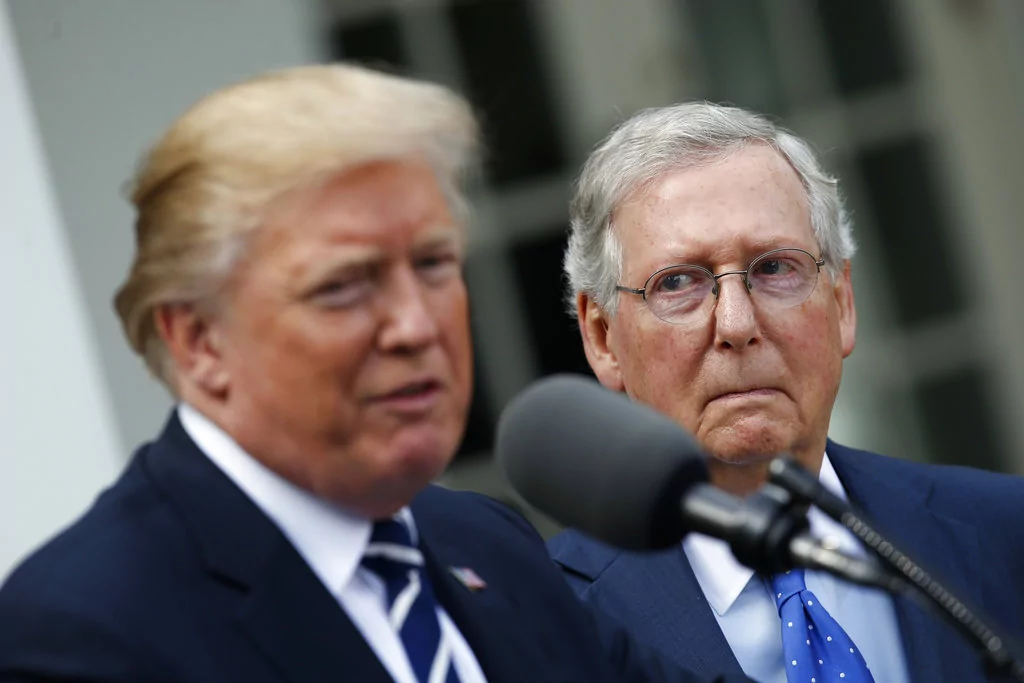

Two competing dynamics define the race for control of the Senate: Republicans have a favorable map, but the Democratic candidates for the most competitive seats are running ahead of their presidential nominee, first under President Joe Biden and now Vice President Kamala Harris.
In the closing days of the 2024 campaign, both the size and partisan tilt of the Senate majority could be determined by the presidential contest.
The better former President Donald Trump does on Election Day, the better Republican Senate candidates are likely to do.
2024 ELECTIONS LIVE UPDATES: LATEST NEWS ON THE TRUMP-HARRIS PRESIDENTIAL RACE
Republicans could still take back the Senate if Harris wins in November. Trump will carry West Virginia and Montana by big margins no matter what happens nationwide. West Virginia has pretty much been in the bag for the GOP since Democrat-turned-nominal independent Sen. Joe Manchin decided not to seek reelection. In Montana, Republican challenger Tim Sheehy appears to be pulling away from Sen. Jon Tester (D-MT).
Trump is also heavily favored to win Ohio by either high single or low double digits. Sen. Sherrod Brown (D-OH) has been clinging to a lead, but not necessarily one big enough to withstand any Trump coattails. The incumbent has done a good job of using populist positioning to stay ahead of the Buckeye State’s increasingly reddish hue. However, Brown has also been fortunate in his election cycles. He first won the seat in 2006, a Democratic wave year, was reelected in 2012 while former President Barack Obama was carrying Ohio, and won again in 2018 during another blue wave.
If Brown’s luck runs out this year, it’s worth looking at other Democratic incumbents and candidates for open Senate seats who are leading but where the remaining undecided voters are mostly for Trump. Ohio will likely once again be red at the presidential level no matter who wins nationally, and there is only so far Brown can run ahead of Harris, though a Trump-Brown voter is easier to picture than some of the other ticket-splitting that will occur this year.
That means Republicans will likely flip the 51-49 Democratic Senate to 51-49 or 52-48 in their favor, regardless of the presidential outcome. But if Trump wins, the Senate races in Pennsylvania, Michigan, Wisconsin, and even Arizona and Nevada, where the Democrats have built fairly solid leads, become much more in play for Republicans.
Sens. Ted Cruz (R-TX), Rick Scott (R-FL), and Deb Fischer (R-NE) are not polling as well as they should be, with an independent candidate starting to gain momentum in Nebraska. Democrats have started devoting resources to those races, with Cruz and Scott popular targets among liberal donors. Trump should win all three states even if Harris is elected. It is difficult to see any of the above Republicans losing if Trump wins the battleground states. Democrats have no other realistic pickup opportunities in the upper chamber.
Trump has, in the past, been seen as an obstacle to downballot Republican success. Democrats running on anti-Trump sentiment recaptured the House in the 2018 midterm elections. When Trump cast doubt on the 2020 election results, Republicans lost two Georgia runoffs and, with them, the Senate. The GOP failed to win back the Senate in the 2022 midterm elections, with Trump’s primary endorsements sharing part of the blame.
Some of these complaints can still be heard this year. Trump ally Kari Lake is trailing Rep. Ruben Gallego (D-AZ) by 7.8 points, according to the RealClearPolitics average. However, this year, Trump has more often been on the same page with the National Republican Senatorial Committee.
A lot of these candidates need Trump to do well. Battleground state Republicans who don’t, such as Lt. Gov. Mark Robinson (R-NC) in his flailing campaign for governor, could be a drag on the top of the ticket.
One additional wildcard is the Maryland Senate race. Former Gov. Larry Hogan is more competitive there than any Republican has a right to be. Trump can’t help him much, and Hogan often has to run away from the national party brand. He will probably need too big of a Democratic crossover vote to prevail. However, a Hogan upset isn’t impossible, with Democrat Angela Alsobrooks only leading by about as much as Gallego in Arizona and Senate Majority Leader Chuck Schumer (D-NY) being forced to spend money to defend the seat.
CLICK HERE TO READ MORE FROM THE WASHINGTON EXAMINER
Harris will easily carry Maryland. If she also wins the battleground states or even just keeps them really close, most or all of their Democratic Senate candidates should win. Just as the presidential race could go from a nailbiter to a 300-plus electoral vote majority for either candidate, there is a wide range of plausible scenarios for the Senate, too.
Senate Minority Leader Mitch McConnell (R-KY) is stepping down from his leadership role at the end of the year in part because it would be difficult for him to coexist with Trump in a second term. Whether McConnell’s successor is the majority leader or minority leader is riding on Trump’s competitiveness in a third straight presidential election.





